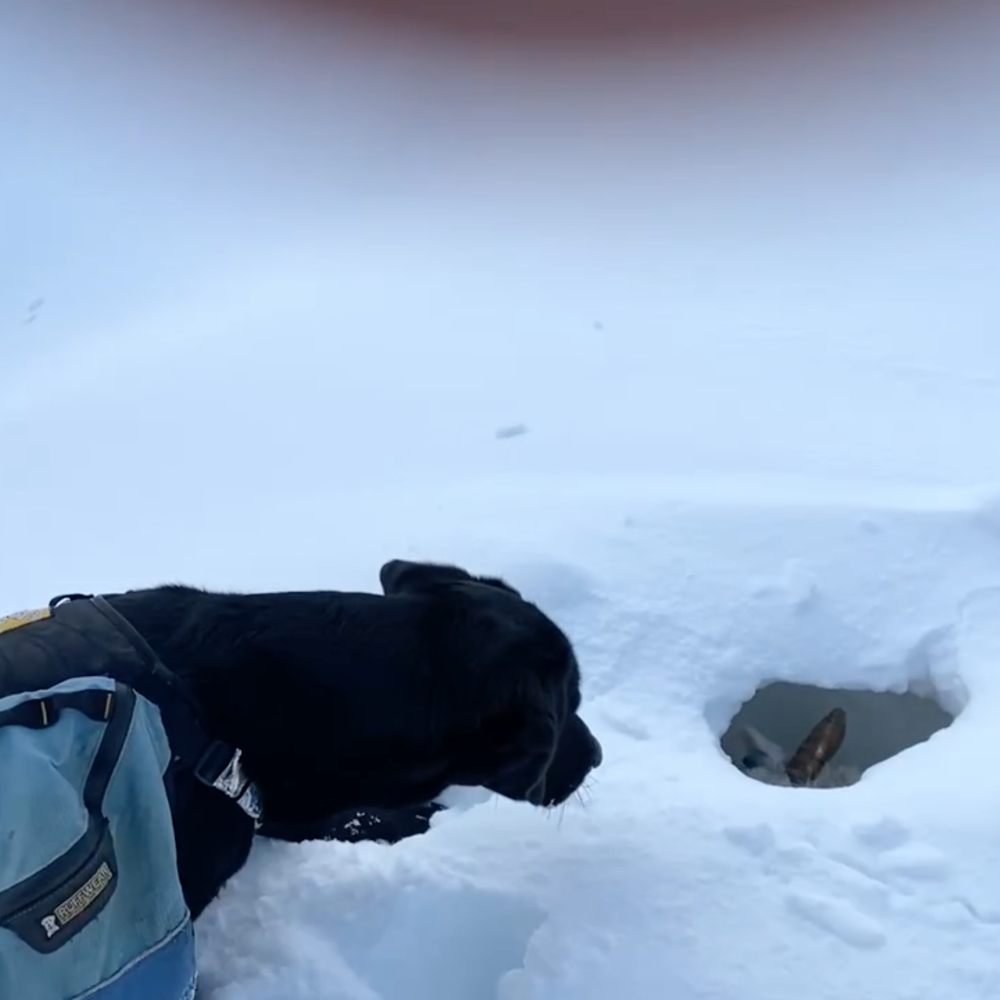Recent news reports tell the story of two hunters trekking through the northwest landscape in Iceland. They were closely monitoring their dog, Garpur, as he rummaged through the snow.
Garpur started to bark unexpectedly, and the two hunters watched him curiously. Had he found a fox? What was that under the snow—was it a bird?
From a small hole in a mound of packed snow and frost, the two hunters saw something move. It had a fairy-tale-like quality about it, like no form either could recognize. From within the shadows of the snowy ground surrounding it, they saw it move again.
Both hunters were relieved when they realized they were watching the horns of a sheep. After a moment’s amazement, they realized the sheep was still alive and moving its head below. With even greater relief, they belted out laughing.
As the hunters crouched down to dig the sheep out, they ruminated over how long it might have been there. It must have been days. Heavy snowfall had started three days prior, and the sheep was probably looking for refuge before the snow became too much. It surely used its horns to cut a hole for air. And, without a doubt, its thick Icelandic wool was what kept it warm.
Once the hunters dug enough snow out, the sheep walked out of the snowy mound into the pale sunlight and grateful freedom.
Important Icelandic Sheep Facts
It’s lucky the hunters even found the sheep, because Iceland has 30% fewer humans than their Iceland sheep population. What’s more, the sheep was found near Gilsfjörður, to the extreme northwest of Iceland. Most of Iceland’s population lives along the southern coast.
This island nation right under the Arctic circle is known and admired for its wool production. In fact, Icelandic sheep are genetically unique after centuries of protective breeding in isolation, making their wool that much more valuable.
One of the characteristic advantages of Icelandic sheep wool is that it’s comprised of two layers: the outer fleece, and a soft, inner þel. Icelandic wool is known as one of the warmest wools in the world as a result.
The two hunters believe the Gilsfjörður sheep only survived days under snow because of the wool it wears.
Despite its distinctive warmth, Icelandic wool is also lighter than most other wools. It comes naturally in more colors than most other wools, too, including brown, grey, black, and white.
Continue reading more about Icelandic sheep.
Returning the Gilsfjörður Sheep Home
Once the sheep was released from its snow cage, it walked a short distance away from the hunters then laid down to rest. The hunters followed her and found her identification tag, which included the information of the farmer who owns her.
By the time the two hunters accompanied the sheep back to its farm, she appeared to be totally recovered.
The identification tags on Icelandic sheep are uniquely useful, because sheep are left to graze away from their farms for several months over the summer in Iceland. The ceremonious collection of sheep to return them to their farms happens every fall and is called Rettir.
In the case of this remarkable Gilsfjörður sheep, she was probably left behind during grazing season.
The farmers remarked how they would have “never looked down into this hole” if their dog Garpur hadn’t been with them.
Fortunately, all ended well, and the hunters ended the day with no game but with quite the anecdote to share around the table that night.










